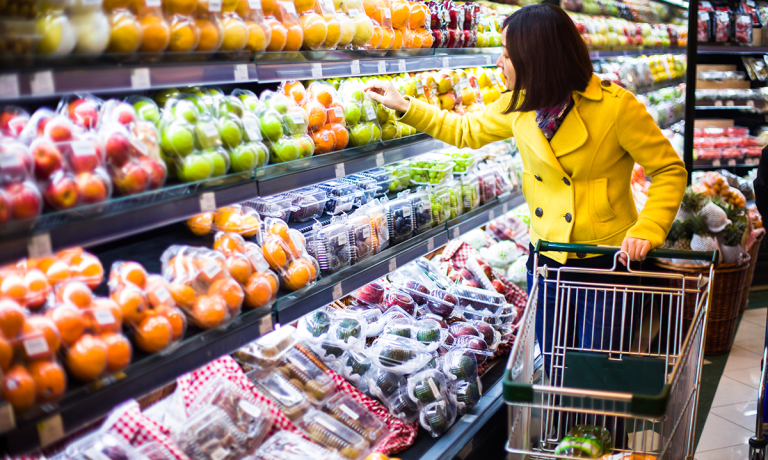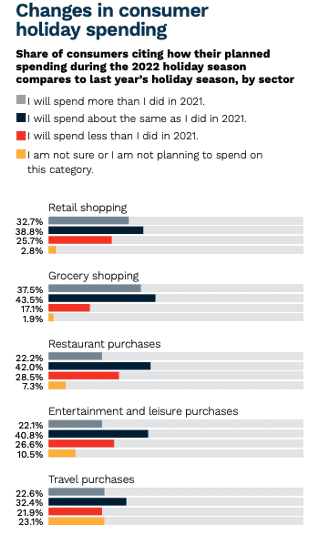
Special foods and overeating may be synonymous with the holidays, but this year, PYMNTS research shows, the additional cost of groceries alongside an increase in the number of consumers living on tight budgets is leading to supermarkets emerging as the season’s big winners.
Where prior years have seen traditional in-demand gifts and gadgets topping consumers’ shopping lists, in 2022, the high cost of food has absorbed what little slack remained, making the practice, or even necessity, of gifting groceries a reality for many households that are buying only essentials.
The data supports the idea that foodstuffs — not regular stuff — is where people’s hearts and wallets are focused this year. The study “New Reality Check: The Paycheck-to-Paycheck Report: Holiday Shopping Edition,” a PYMNTS and LendingClub collaboration, found that 15 million Americans who bought holiday gifts last year are sitting out gifting altogether in 2022.
Where they are cutting back far less is in holiday meals.
“Just 17% of grocery shoppers expect to spend less on grocery purchases than in 2021, although 26% of retail shoppers plan to spend less on retail purchases in 2022,” the study stated. “Consumers are most likely to spend less at restaurants this year, with 29% of respondents saying they will reduce such spending, followed by entertainment and leisure, with 27% planning to cut back.”
The study also found that cumulatively 81% of shoppers surveyed said they plan to spend as much or more this year than last on groceries, while nonessential spending projections remain depressed.

Food and Financials
Even the biggest retailers, including both Walmart and Target last week, reported that groceries or other so-called consumable essential goods continue to lead the pack while also bringing people into their stores and onto their websites.
Christina Hennington, executive vice president and chief growth officer at Target, said Thursday (Nov. 17) that across demographics, one of the main “inflection points” in consumers’ engagement with the retailer is “the amount that they buy food and beverage.”
At Walmart, Chief Financial Officer John Rainey told investors and analysts that the retail giant “is well positioned to serve customers and gain greater trip frequency during tougher economic periods, and we have even more tools to do so in the cycle,” Rainey added. “For example, we’ve continued to gain grocery market share from households across income demographics, with nearly three-quarters of the share gain coming from those exceeding $100,000 in annual income.”
Other big food players are using loyalty to add value for grocery shoppers this season. Multinational grocery retailer Ahold Delhaize said early in November that its loyalty programs have netted over $1.5 billion in incremental grocery sales in 2022 in its United States chain holdings, including Food Lion, FreshDirect and Giant Food.
Supermarket leader Kroger also said last week that food price anxiety was causing more customers to shop in-store as they found it easier to scout out bargains versus online.
“We know that very price sensitive customers are those that have lower engagement with eCommerce and are lower on the adoption curve, and those are the customers that are most likely to go into a store,” Barbara Connors, vice president of commercial insights at 84.51°, the marketing insights subsidiary of the grocery giant, told PYMNTS. “And one of the reasons is because they are looking for sales, deals and coupons…”
For all PYMNTS retail coverage, subscribe to the daily Retail Newsletter.